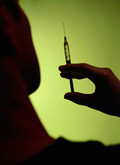Generics
EMA launches European shortages monitoring platform to tackle persistent medicine shortages
The European Medicines Agency (EMA) launched the European Shortages Monitoring Platform (ESMP) to address persistent medicine shortages across the European Union (EU). This centralized system improves reporting, monitoring, and management, ensuring medicine availability during crises and public health emergencies, and will be mandatory from 2025.
Japan’s drug shortage crisis: challenges and policy solutions
Drug shortages are worsening worldwide [1, 2], and Japan is facing significant challenges due to a combination of factors. One major issue arises from the shift from brand-name to generic drugs, coupled with scandals involving poor manufacturing and development practices. These shortages affect access to essential treatments, prompting calls for action from pharmaceutical companies and the government.
Saudi FDA drug approvals and GMP inspections: trend analysis
A GaBIJ Review Article entitled ‘Trends in Saudi FDA drug approvals and GMP inspections: an observational study’, was published by a group of authors, Alhomaidan et al., from Saudi Food and Drug Authority (SFDA) in October 2023 [1].
FDA approves generic teriparatide and levetiracetam
Two generic versions of osteoporosis treatment, Forteo/Forsteo (teriparatide injection), developed by Teva and Ambio, were approved by the US Food and Drug administration (FDA) in November and December 2023. Although teriparatide is a biological, the new products have been produced synthetically and are therefore generic versions and not biosimilars, of the originator. In addition, Strides Pharma has received approval for its generic seizure medication, levetiracetam.
Generic medications in the Lebanese community: understanding and public perception
A study conducted by Hatem G and Itani R et al. found that factors such as regulatory standards and quality assurance can influence people’s perception of generic drugs. This research involved 385 patients recruited from six public healthcare centres in Lebanon. Like in many countries, the regulatory authority in Lebanon ensures that generic drugs meet the same standards as brand-name drugs.
Generic drug growth in Brazil and Venezuela
Over the past few years, both Brazil and Venezuela have witnessed an increase in the production, growth, and acceptance of generic medicines in their respective healthcare systems.
Community pharmacists’ understanding of generic and biosimilar drugs: Lebanon case study
A study conducted by Awada S et al. stated that several factors can contribute to a lack of knowledge among community pharmacists regarding the differences between biosimilar and generic drugs. According to the authors, understanding the scientific and regulatory aspects of biosimilars can be challenging, primarily due to the limited clinical experience in dispensing biosimilars, which leads to misconceptions about their characteristics [1].
Reshaping landscape of Japanese generics market – uncertain future of universal health insurance
According to a study conducted by Kosaka M et al., Japan established a national health insurance scheme in 1961. This scheme ensured that the entire Japanese population has equal access to medical care by paying only 10%–30% of the medical cost from their own pocket [1]. Despite the advancement of medical technology and a fast-ageing society, Japan’s healthcare costs have continued to rise. However, the Japanese government has failed to offer a fundamental solution and has instead implemented interim measures, with a notable example being the encouragement of generic drug utilization [2]. Similar issues and challenges have been observed in wealthy Organisation for Economic Co-operation and Development (OECD) Asian health markets [3].
Impact of e-bidding procurement on generic omeprazole injection prices in Thailand
To address Thailand's increasing drug costs, the government implemented e-bidding for drug procurement. In a study by Pentrakan et al., e-bidding reduced omeprazole injection prices by 17.35% per vial and enhanced the procurement process. Nonetheless, maintaining a balance between innovation and involving local suppliers is vital for success [1].
Market penetration of generic drugs in Mexico and Brazil
Generic drugs represent a great advance both in Brazil and Mexico, as they allow the population to access affordable, safe and effective treatments.











